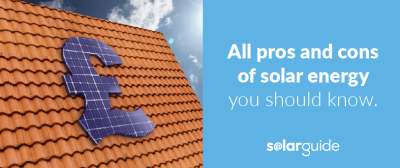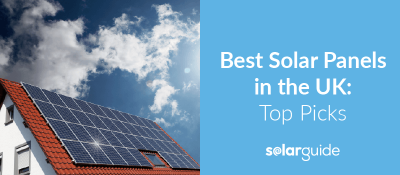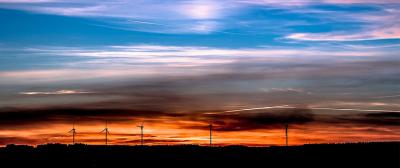Solar Panels Versus Wind Turbines

Solar panels and wind turbines offer a lot of potential when it comes to generating energy from renewable sources.
The number of homeowners turning to solar panels has been on the rise in recent years but in terms of energy generation on a national scale, wind is the leading renewable.
As the windiest country in Europe, is the UK better placed turning to wind turbines over solar panels? Find out as we put two of the most popular renewable energy generation systems head-to-head: solar panels versus wind turbines.
How do solar panels work?
Solar photovoltaic (PV) panels are made up of cells that absorb solar radiation from the sun and turn it into electricity. This electricity is in a direct current (DC) which is then converted into alternating current (AC) by a solar inverter so that it can be used to power the electrical appliances around the home.
How do wind turbines work?
Wind turbines can either be installed onland or offshore and face either downwind (away from the wind) or upwind (into the wind). As wind blows, the wind turbine's 2-3 propellers turn around which spins a generator that produces electricity. Like solar panels, this electricity is DC and has to be converted into an alternating current before it can be used.
While it’s commonly thought ‘the windier the better’ in terms of energy generation from wind turbines, not all wind speeds are suitable for wind turbines. A controller within the wind turbine starts the rotation of the propellers in wind speeds of 8-16mph and turns them off should the wind reach dangerously high speeds of around 55mph. Wind speed is measured by an anemometer which sits behind the propellers and turns in the wind.
How much of the UK energy network is made up of solar and wind?
The landscape of the UK energy network is changing. In recent years, our reliance on fossil fuels has been heading on a downwards trajectory. In 2019, there were 139 days where renewables generated more energy than fossil fuels – up from 107 the year before and 12 in 2015.
Gas is still well out in front but the rapid drop in coal usage has paved the way for renewables. Solar (3.9%) and wind (19.9%) now hold a larger share of the UK energy generation mix than coal (2.1%).

Similarities shared by solar and wind
Solar and wind are both renewable sources of energy that will never run out, unlike fossil fuels which are also bad for the environment. So, it's only natural that some of their qualities and downsides are shared.
| Benefits of Solar and Wind | Disadvantages of Solar and Wind |
|---|---|
| Renewable sources of energy | Inconsistent energy sources |
| Don’t emit greenhouse gases as they generate energy | Sometimes viewed as eyesores (as are fossil fuel power stations) |
| Relatively inexpensive to maintain | Currently fairly expensive technologies to manufacture |
Solar panels vs wind turbines: What are the advantages?
Solar and wind both offer a number of benefits – especially over the burning of fossil fuels as they don't release carbon into the atmosphere which is a leading cause of climate change.
| Solar Panel Advantages | Wind Turbine Advantages |
|---|---|
| Daylight patterns are more predictable than wind | Available day and night |
| Can be installed domestically on rooftops or in gardens | Wind farms can be situated offshore |
| Need very little maintenance | Capable of producing more energy than solar panels |
| Don’t make any noise during operation | The manufacturing process of wind turbines is more environmentally friendly than solar panels |
Do they have any disadvantages?
Despite being clean forms of energy generation there are potential downsides that need to be considered.
| Solar Panel Advantages | Wind Turbine Advantages |
|---|---|
| Daylight patterns are more predictable than wind | Available day and night |
| Can be installed domestically on rooftops or in gardens | Wind farms can be situated offshore |
| Need very little maintenance | Capable of producing more energy than solar panels |
| Don’t make any noise during operation | The manufacturing process of wind turbines is more environmentally friendly than solar panels |
Do they have any disadvantages?
Despite being clean forms of energy generation there are potential downsides that need to be considered.
| Solar Panel Disadvantages | Wind Turbine Disadvantages |
|---|---|
| Can't generate energy during the night | Wind isn't the most reliable energy source |
| Aren't as efficient on cloudy days | Can put flying wildlife at risk of injury (however, this has been proven to be minimal especially compared to fracking) |
| Don't generate as much electricity as wind turbines | Varying levels of noise as they operate |
| Take up more space than wind farms | Lengthy network systems are often needed to deliver the electricity from rural areas to properties |
| On a domestic level, the Feed-in Tariff, which paid homeowners for the energy generated, has come to an end but the Smart Export Guarantee is now available. | Often require planning permission |
How much do solar panels cost?
The cost of a solar PV system will vary depending on the number of solar panels needed to meet the energy demand as well as the manufacturer and model. The good news is that the price of solar panels has dropped greatly in recent years and are now around 60% cheaper than in 2010.
| System Size | Potential Cost of Solar Panels |
|---|---|
| 1kW | £1,840 |
| 2kW | £3,680 |
| 3kW | £5,520 |
| 4kW | £6,040 |
For a solar PV system to meet the energy demands of a typical 3 bed house, a 3-4kW system will be needed, which can cost between £5,520 and £6,040.
Find out more about How Much it Costs to Install Solar Panels in the UK.
How much do wind turbines cost?
The cost of a wind turbine will vary greatly depending on its size which can range from 1 kW right up to 3 MW – with the latter being designed for commercial wind farm developments.
A 1 kW wind turbine could cost around £1,500 with a larger output of 15 kW hitting the £70,000 mark. Anything above this isn't really suitable for domestic installation and has instead been designed for wide-scale energy generation. Commercial wind turbines of 2-3 MW easily pass into the millions in terms of cost.
Smaller wind turbines are suitable for domestic use while the large outputs are better suited for larger scale generation.
Wind turbine costs can start out lower (when starting with a 1 kW system) but their costs will soon soar beyond that of a solar PV system with larger system sizes.
| System Size | Potential Cost of Solar Panels |
|---|---|
| 1kW | £1,500 |
| 1.5kW | £7,000 |
| 2.5kW | £12,000 |
| 5kW | £23,000 |
| 10kW | £45,000 |
| 15kW | £70,000 |
Interestingly, offshore wind turbines can be as much as 63% cheaper than onshore and by 2030 wind turbines as a whole are expected to be the cheapest form of energy generation on a commercial level.
Solar versus wind: Which is best?
On a domestic level, solar panels are definitely the more practical as they can be installed onto the roof without the need for planning permission (in the majority of cases). Wind turbines are capable of generating more electricity than solar but due to their size, they're better suited to industrial developments.
Living on a built up housing estate or in a city will block the flow of wind and restrict the energy generation of a wind turbine. Having solar panels installed on your roof would be the the better option.
Find solar panels installers near you
At Solar Guide, we can help you make the first step towards making your home more environmentally friendly by connecting you with solar panel installers in your area. Take a few moments to complete our simple online form, letting us know a few details about the work you need carrying out, and you'll get free quotes from up to 4 solar installers.
Find local, MSC certified Solar Installers
Start your quote
Find local, MSC certified Solar Installers














